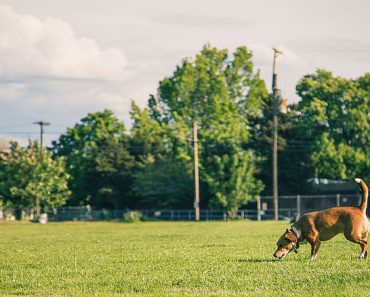The spring season is not only about the sun and flowers. The start of the warmer months signals the return of animals that have been hibernating. The majority of these creatures are safe for dogs to encounter, but some, such as snakes, can harm their health.
Snakes can be found in a variety of environments, including deserts, forests, swamps, and grasslands. Since they are cold-blooded, they lack the capacity to control their body temperature on their own; thus, they seek out warm locations. They hibernate under rocks, in tunnels or in burrows during the winter; however, they have been known to hibernate inside human residences.
When snakes emerge during the hotter months to seek food, there’s a chance they may come into contact with our naturally inquisitive four-legged companions.
If it doesn’t work, we’ll go through the crucial information about how to treat a snake bite on a dog:

Why Do Snakes Bite?
Snakes have no need to bite other animals unless they are engaged in a fight over food.
Because they lack limbs or claws, they bite defensively. It’s possible for a dog to be bitten when it becomes too persistent in attempting to drive a snake away.
The seriousness of the problem is determined by a number of things, including:
- Type of snake. Some snakes are poisonous, while others aren’t. That said, some non-poisonous snakes have a more painful bite that can lead to infection, whereas other non-venomous snakes can cause excruciating pain and burn with a single bite. In the end, it all boils down to the species of snake that inflicted the bite. Some species are more poisonous than others, and some have far more toxic venom than others. And some snakes’ venom has a delayed onset and can cause serious damage.
- The quantity of venom delivered. Snakes’ venom glands are fuller throughout the summer months, creating a more damaging bite. This is, however, determined by the size and maturity of the snake.
- Where your pet was bitten by the snake. The faster it spreads through the body, the closer to the heart the bite is.
How to Treat a Dog Snake Bite
If treated promptly, approximately 80% of dogs live after being bitten by a snake, so rapid action is required. Recognizing the initial symptoms of a snake bite and going to get treatment are two ways to respond quickly.

Recognize the Symptoms
Although the severity of snakebite symptoms varies depending on the factors listed above, keep an eye out for any of these symptoms in your dog:
- Your pet suddenly feels weak and falls down, only to get up normally. Snake bites are one of the primary causes of this type of collapse, although it isn’t the only thing that can induce it.
- Trembling, shaking or twitching of muscles
- Diarrhea and/or vomiting
- Unsteadiness/weakness in hind legs
- Excessive salivation, drooling or frothing at the mouth
- Bloody urine
- Dilated pupils
- Paralysis
Another critical symptom to look for when determining how to treat a snake bite on a dog? Bite wounds and discomfort/swelling around the site of the bite are indicators that your dog was bitten. When your dog tries to catch the snake, snakes will frequently bite your pet on the face, neck, or legs. In many situations, there may be little pain or swelling, making this sign less reliable than other ones in determining whether your pet has been bitten — you must still keep an eye out for additional symptoms.
Snake Bites Should Be Treated by a Veterinarian
Seek expert medical help if you believe your pet has been bitten by a snake. If treated promptly, most dogs will survive a snake bite.
Call the clinic ahead of time to make sure everything is in place for your pet’s treatment as soon as you arrive.
Important: You will almost certainly be asked to identify the snake, but do not attempt to capture or kill it. According to experts, a snake should be left alone 90% of the time. If you believe the snake is dangerous, contact Animal Control and have them take care of it.






